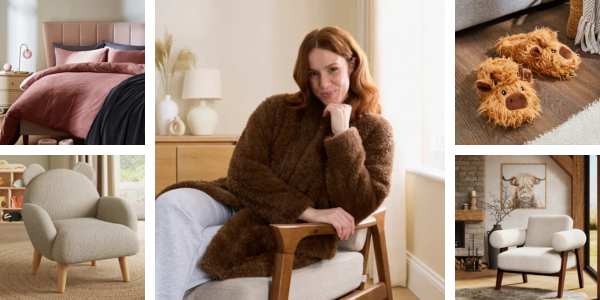

Keep hearing thuds in the middle of the night as your toddler escapes their cot AGAIN? It might be time for the swap to a big bed.
Whether you’ve got an escape artist on your hands or just feel they’ve outgrown their cot, how do you know when it’s time to switch?
There is no ‘right’ time to move from a cot to a cot bed
or toddler bed. Some make the change as young as one and some as old as four - it all depends on your child. But there are a few signs that might help you decide.
Signs it’s time for a toddler bed
- They regularly climb out of their cot.
- They’re toilet trained (or on the way) so need to be able to get to the potty or toilet.
- They’re showing an interest in big beds (like wanting to sleep in yours!).
- Banging against the sides of a cot is disturbing their sleep.
- They would be able to get in and out of a bed on their own.
It could be that you’ve got a baby on the way and need the cot or you just feel they’re ready to make the change - remember there’s no right or wrong time to make the change. If you do need to cot for a new baby it’s a good idea to leave plenty of time for the transition (3 or more months before your baby is due).
What you need
- A bed! You have a few options here. If you bought a cot bed you can just take the sides off. Or buy a toddler bed, which tend to be smaller than a single bed but usually lower to the floor with higher sides and headboards for a cosy feeling. Or you could go for a standard single bed and use bed guards or bumpers. Some parents even start with a mattress on the floor to avoid roll-out-of-the-bed accidents. What you choose depends on how long you want to use the bed for and what room you have.
- A mattress - it’s best to go for something firm.
- Bedding. Don’t bother with pillows until they’re at least two because of the risk of suffocation. Give heavy blankets and hundreds of soft toys a swerve for the same reason.
- Swap out sleeping bags for onesies if you want to keep your little one warm.
Safety first
- There are a few safety things you’ll need to check on before you make the change. It’s a good idea to install a safety gate so you don’t have nighttime trips downstairs. And window locks are a good idea too. Make sure anything that could strangle your child (curtain and blind cords, mobiles) are way out of reach or attached to the wall. Check any plug sockets have covers and take out anything electrical they could play with. Look around at your furniture - can they climb on it or pull it over, if so take it away or attach it to the wall with brackets. Finally move stuff like bum cream, medicines and small toys, basically anything your toddler could find and swallow.
- Don’t put the mattress or bed too close to the wall as it’s a suffocation risk.
- Give the bed a check for gaps between the bed rail and frame where they could get stuck.
Before you make the move
- Wait for a good time to make the move, can you manage a few sleepless nights? Have you got the patience for it? If not then leaving it a few weeks won’t cause any harm.
- Get your child involved in the plan, and make it fun. Let them pick the bed (with your direction of course) and bedding. Get them to help you set up the room and try out the bed at naptime.
- The more enjoyable you make the experience the better, so you could throw a ‘moving to my big bed’ party.
The first few nights
The secret to a successful move is gentle persistence (and a truckload of calm patience). It’s a massive transition for your child so it can take a while for them to get used to the idea.
- Focus on the positives and excitement of the change and tell your child how proud you are.
- Keep to your normal bedtime routine, with extra reassurance before you leave.
- Ask your child to get into bed on their own and let them spend time arranging their blankets
- Don’t worry if they keep getting out of bed for the first few nights, you just need to stay calm and guide them back to bed.
- Create a chilled environment, if you leave loads of toys in their room then they’re bound to want to play with them. A nightlight and comfort blanket or toy can help, especially if it’s one they had in their cot.
- You can also try reward charts to reinforce the behaviour you want (get into their own bed, stay in all night).
Don’t expect them to stay in bed and sleep through the first night (or second or third), give it time and stick to a consistent routine and you’ll get there together.
Mum of a toddler and need some help and support? Join us on Facebook, 70,000 mums who know exactly where you’ve been.
Read more on sleep regressions and developmental leaps here.
If you found this useful, you'll like...


.png)








